

Max Davies
2025 BYD Shark 6 review
23 Days Ago

Journalist
Yes, Jim, this is a Chevrolet Silverado, but not as we know it.
Unlike the F-150 Lightning, which shares its platform and most of its body with petrol- and diesel-powered versions, the Silverado EV is a different beast to its internal combustion cousins.
Under the skin, the Silverado EV uses the same Ultium EV platform as the GMC Hummer EV pickup and GMC Hummer EV SUV. As such, the exterior and interior of the Silverado EV is completely unique, and the electric pickup truck is only available with a crew cab body.
The Silverado EV will initially be available in two trims: the WT (or Work Truck), and the RST First Edition.

Aimed at fleet customers, the WT starts from US$41,595 ($57,600), and comes with black bumpers and steel wheels.
The WT’s powertrain is said to make a total of 380kW of power and 834Nm of torque. In standard guise it has a payload rating of 544kg (1200 pounds) and can tow up to 3629kg (8000 pounds).
A special fleet-only model ups the tow rating to 9072kg (20,000 pounds).
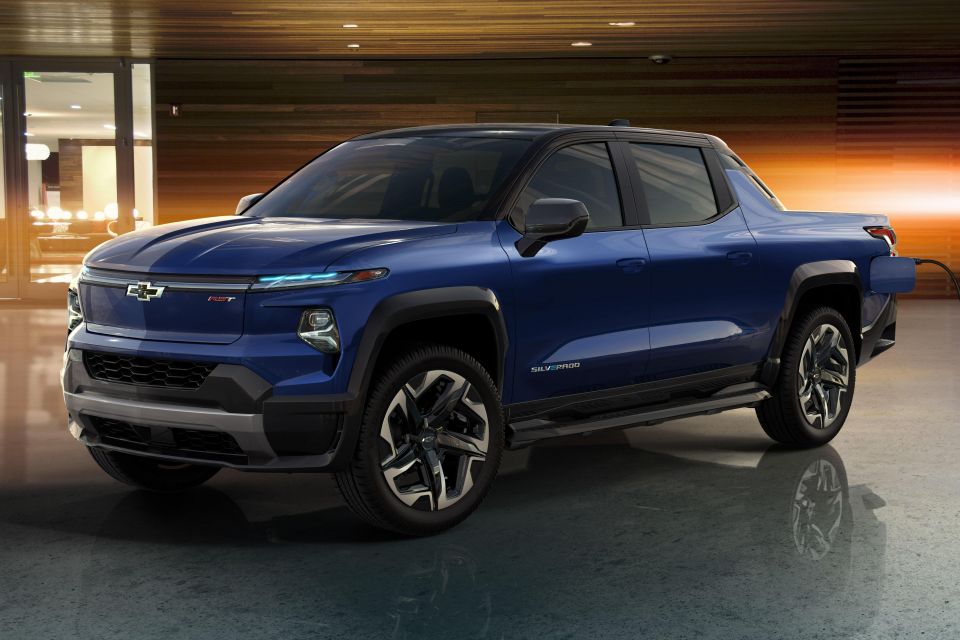
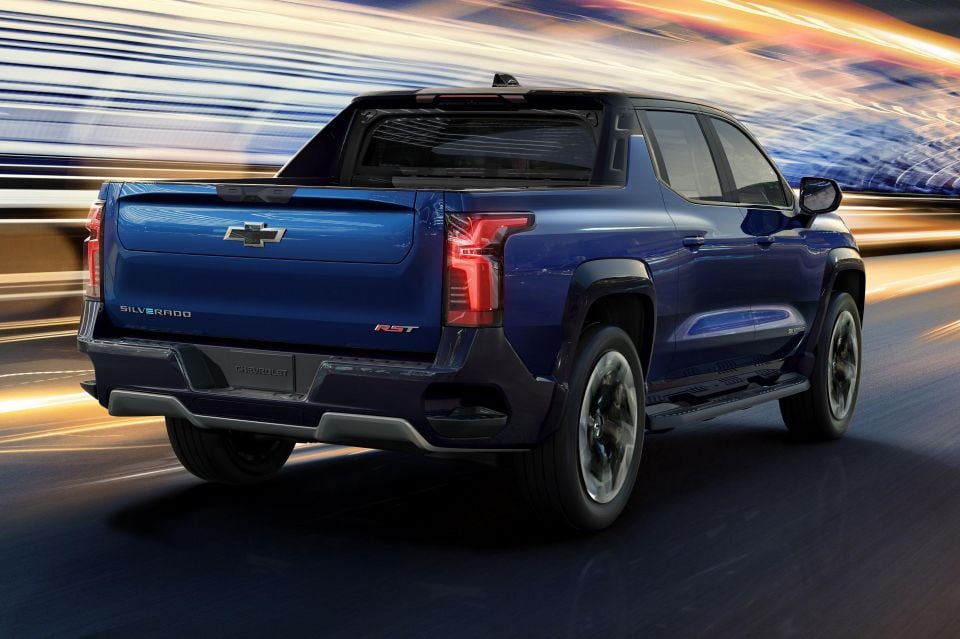
It’s a big step up to the RST First Edition, which starts from US$106,695 ($147,600). Unlike some of its competitors, the Silverado EV doesn’t qualify for the US federal government’s US$7500 ($10,400) tax credit as the combined sales of the Bolt and Volt have exceeded the program’s hard cap of 200,000 cars per manufacturer.
To justify its price, the RST First Edition comes with an all-wheel drive powertrain capable of making of 495kW and 1058Nm in Wide Open Watts (WOW) — yes, really — mode.
Foot-to-the-floor, the RST is capable of completing the 0-60mph (0-97km/h) dash in 4.5 seconds.


Other upgrades include 24-inch alloy wheels, four-wheel steering, adaptive air suspension that can raise or lower the car by 50mm, and the SuperCruise hands-free driving mode that works on 320,000km of approved highways in the US and Canada.
The RST also comes standard with 17.0-inch infotainment screen, 11.0-inch instrumentation display, a 14.0-inch head-up display, a glass roof, and a 26.5L console bin.
Optional extras include a Multi-Flex tailgate, and a “mid-gate” that expands the cargo tray into the passenger compartment, allowing the truck to carry items up to 3.3m long.


GM has yet to announce details about the rest of the Silverado EV range, but promises the yet-to-be-revealed mid-range models will fill all the available price points between the WT and RST.
Both models are said to have a driving range of 645km (400mi) on a full charge, and will support DC fast chargers up to 350kW.
All Silverado EVs also come with a waterproof front trunk capable of housing a large suitcase. A 10.2kW PowerBar with up to 10 outlets is available on all variants.

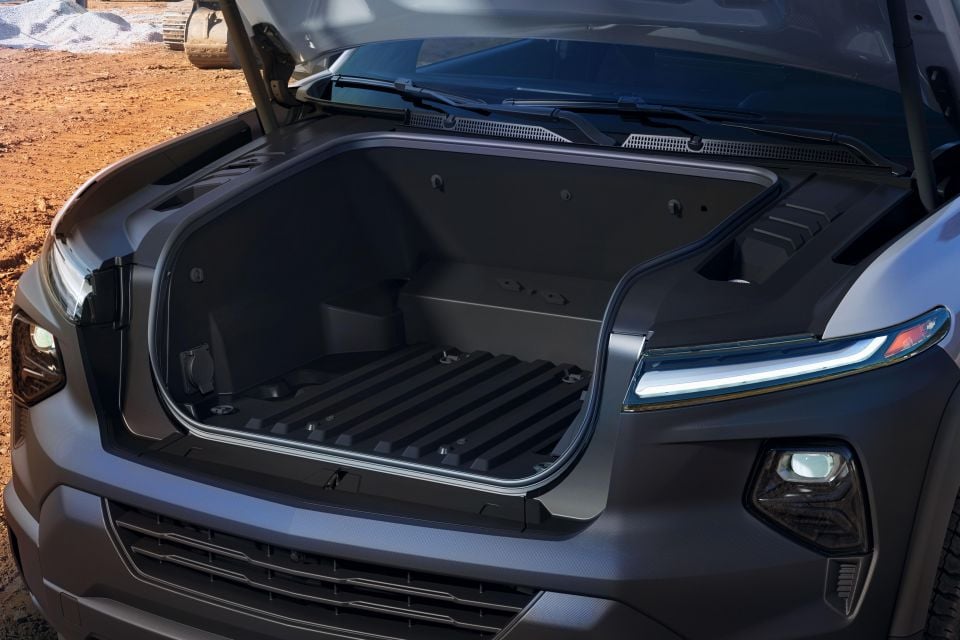
US residents can place reservations for the Silverado EV now, but the first deliveries won’t begin until the second quarter of 2023 when the WT heads out the gate.
The range-topping RST First Edition is scheduled to become available in the third quarter of 2023.
While it hasn’t released any details, Chevrolet has also released a single teaser image of a Trail Boss variant of the Silverado EV.

This more off-road-oriented variant features a matte black fascia plus a pair of red recovery hooks.
If the regular, petrol-powered Silverado 1500 LT Trail Boss is anything to go by, expect some additional changes under the skin to improve the truck’s off-road ability.
Pricing has also yet to be announced for the Trail Boss.

With prices of US$41,595 for the WT and US$106,695 for the RST, the Silverado EV is more expensive than the F-150 Lightning, which is currently still eligible for the US Government’s tax credit.
The fleet-focused Lightning Pro starts at US$39,974 ($55,369) before any tax credit, while even the top-spec Platinum is US$90,874 ($125,873).
Where expert car reviews meet expert car buying – CarExpert gives you trusted advice, personalised service and real savings on your next new car.
Derek Fung would love to tell you about his multiple degrees, but he's too busy writing up some news right now. In his spare time Derek loves chasing automotive rabbits down the hole. Based in New York, New York, Derek loves to travel and is very much a window not an aisle person.


Max Davies
23 Days Ago


Josh Nevett
15 Days Ago
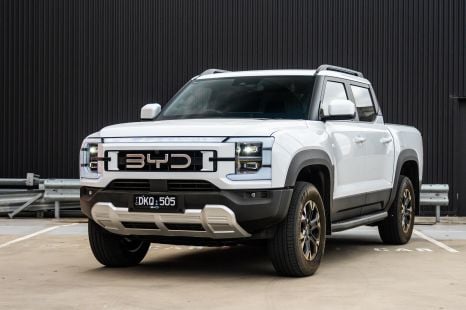

William Stopford
13 Days Ago


Max Davies
9 Days Ago


James Wong
7 Days Ago
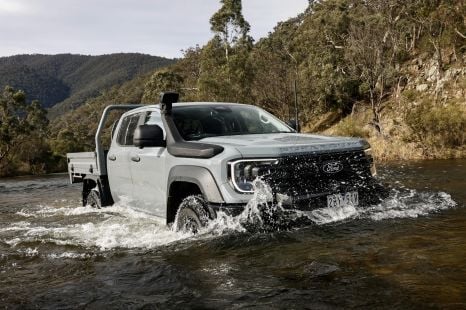

Max Davies
7 Days Ago